Orcas get their nickname “killer whales” from their reputation of being ferocious predators, exhibiting almost hateful behaviors when toying with their prey. Interestingly, however, killer whales are actually very large dolphins, reaching lengths of 33 feet (10 m) and weights of at least 10 metric tones (22,000 pounds).
Orcas and other dolphins are thought to be some of the smartest animals on the planet, challenging the great apes (chimps and gorillas) for the top spot.
They are also extremely curious and often approach people to investigate. Their intelligence is likely both a result of and a driver of their complex social structures. They generally live in small groups and organize complex, group behaviors when mating and hunting. They are intelligent, playful, powerful animals – a worrisome combination if you happen to be their preferred prey. Different orca populations specialize on different prey types, including large bony fishes; seals, sea lions, and other large marine mammals; and penguins; among other things.
Though all orcas, worldwide, are considered to be members of the same species, there are several known populations that have slightly different appearances, sizes, and behaviors. These include populations that are somewhat territorial and do not migrate long distances (the so called resident populations) and those that are more migratory in nature (the so called transient populations). Furthermore, some transient populations stay near the coast and overlap with resident populations, while others are oceanic. Some orca scientists believe that these populations may represent different species, and recent research suggests that there may be as many as 16 different species. To date, the new species have yet to be described, and the cosmopolitan species Orcinus orca is considered to cover all individuals around the world, regardless of behavior or appearance.
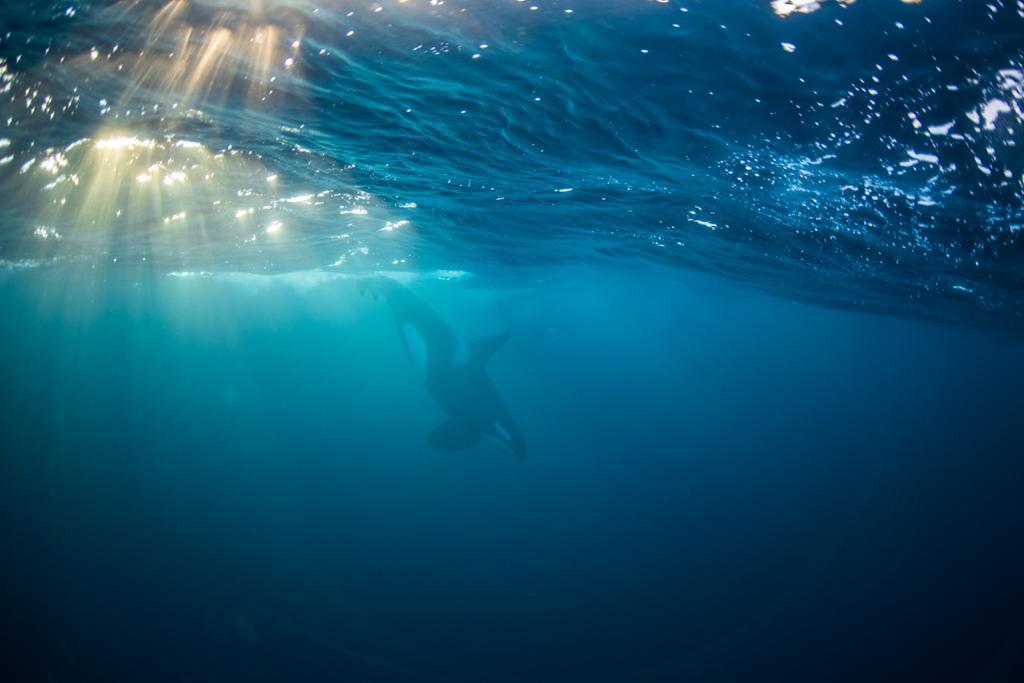
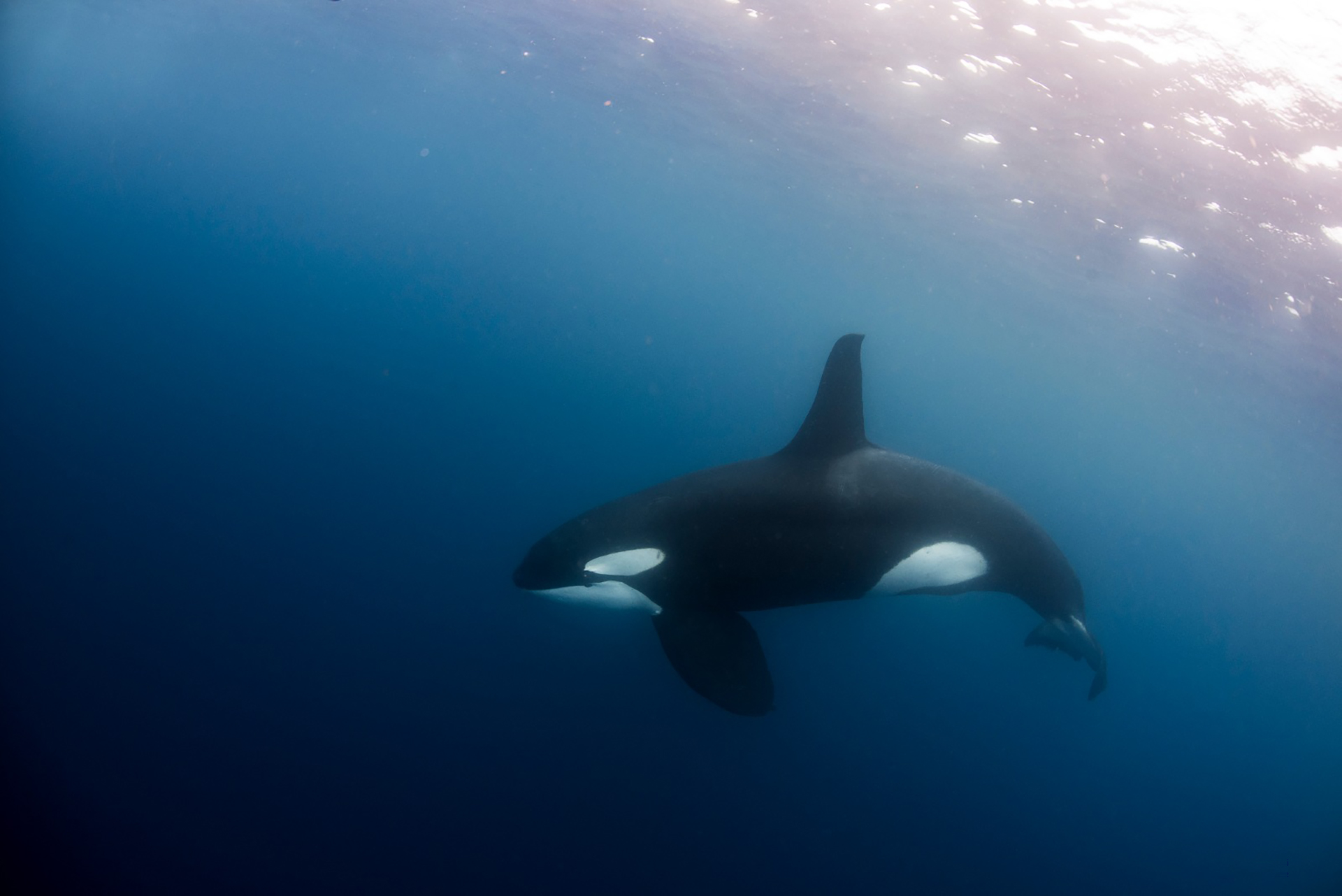
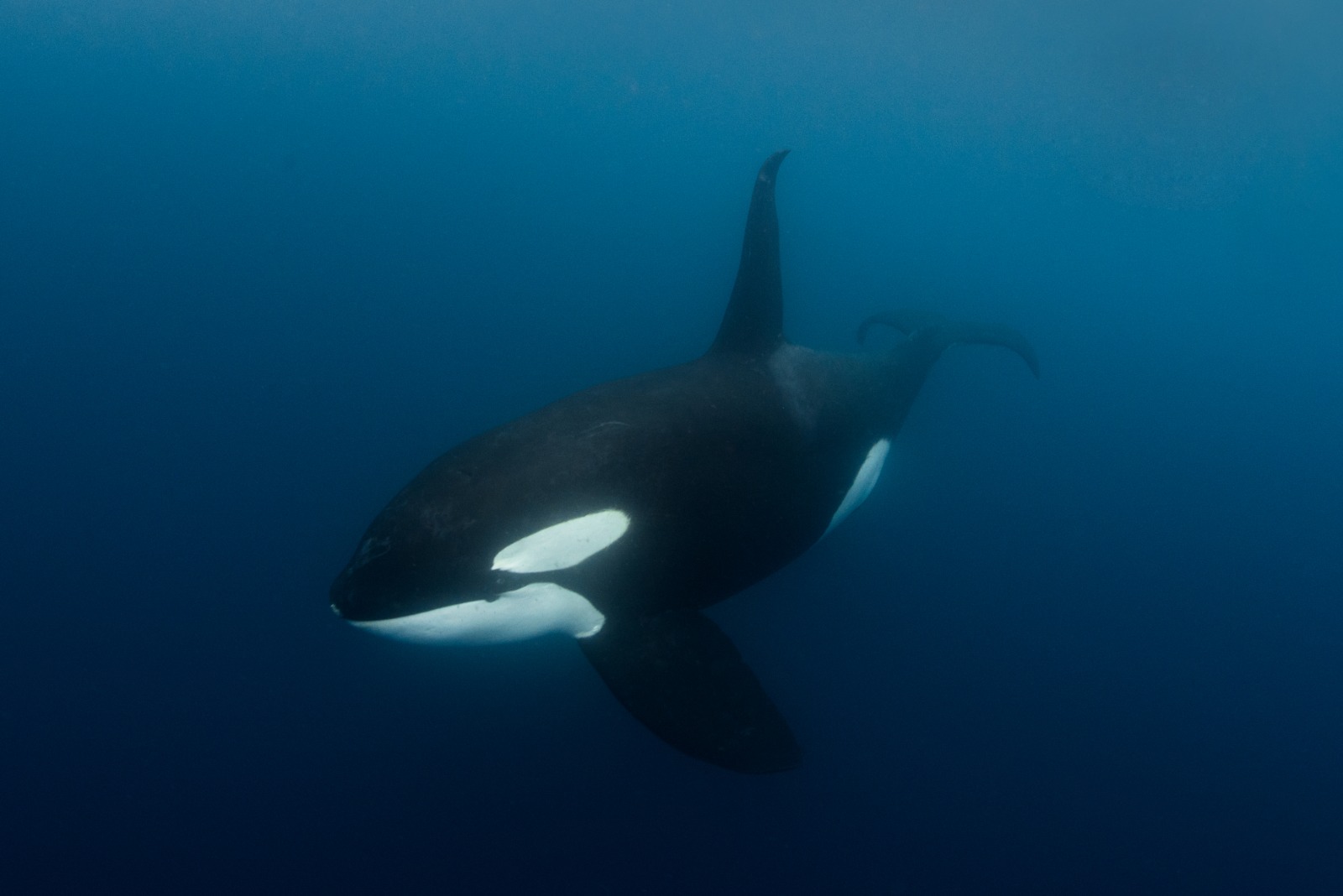
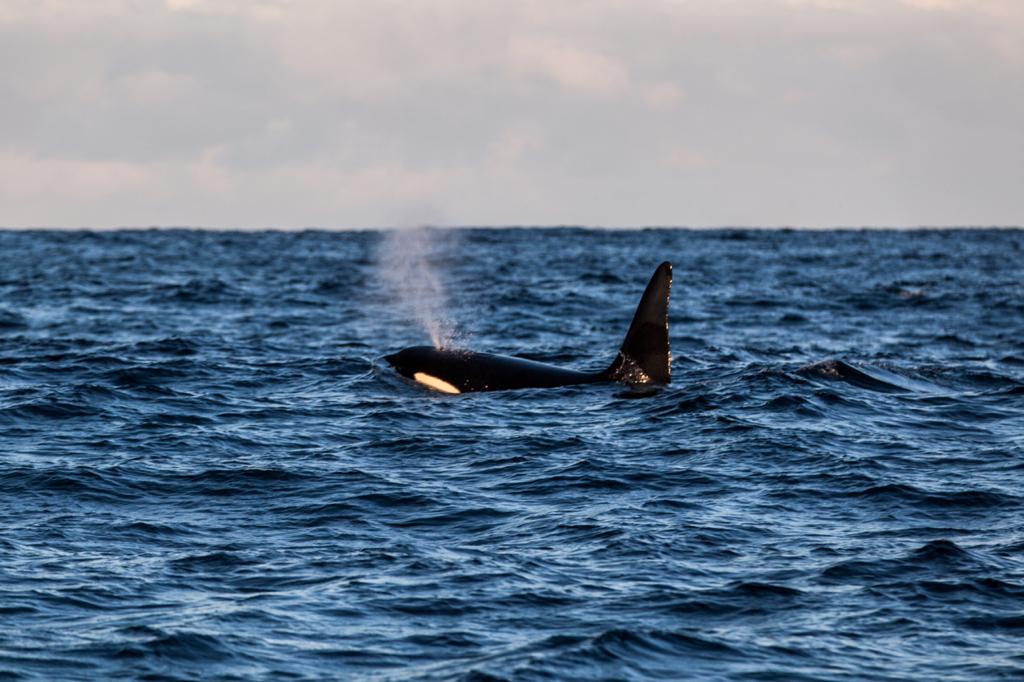
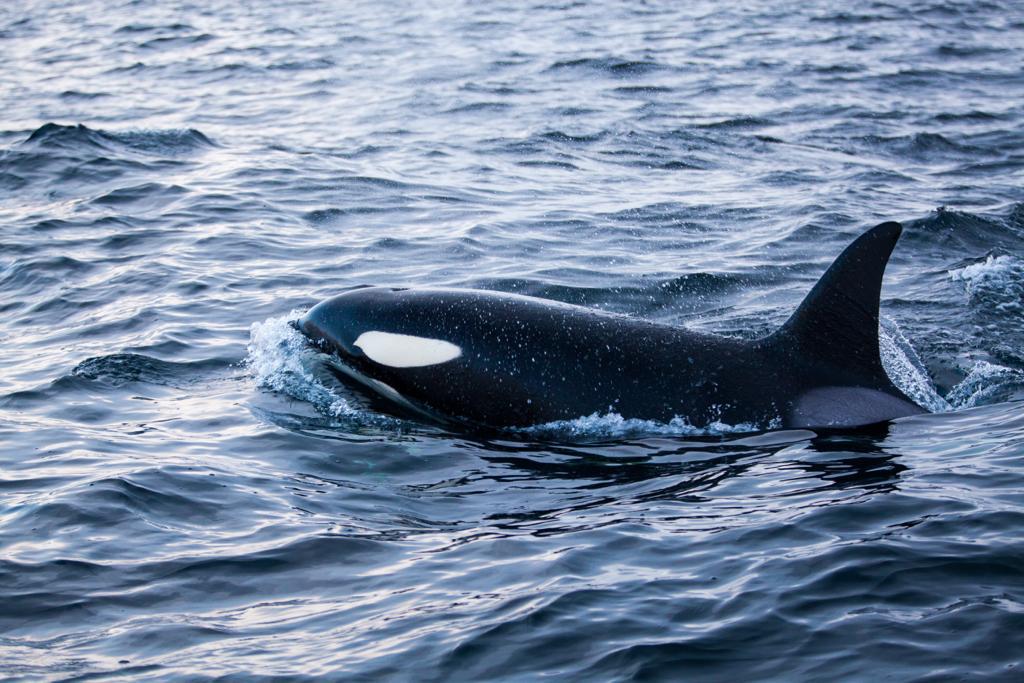
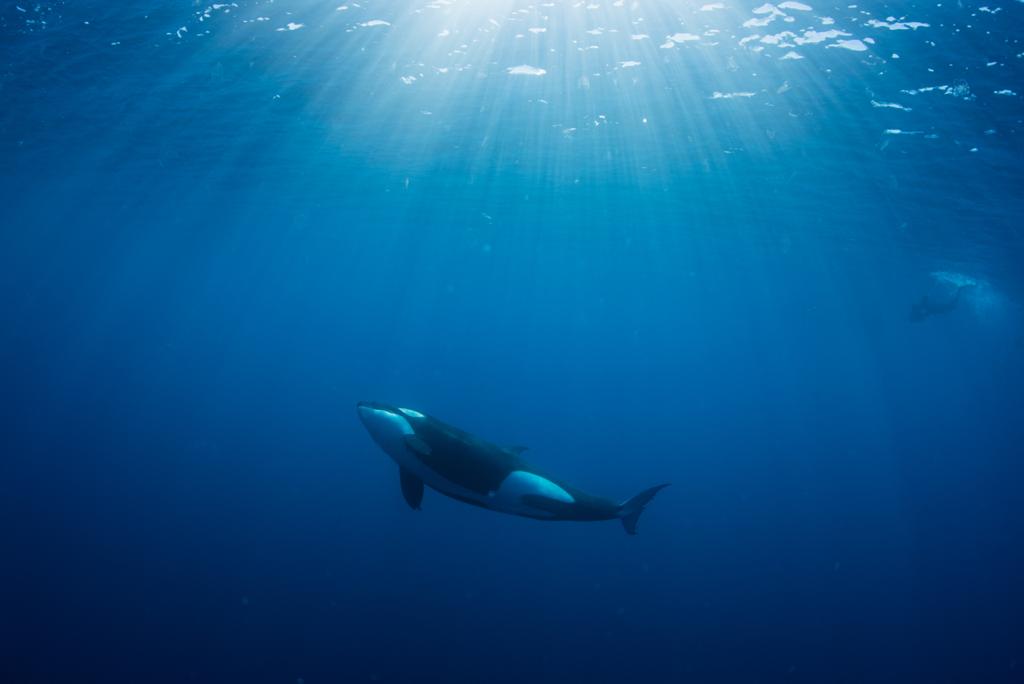
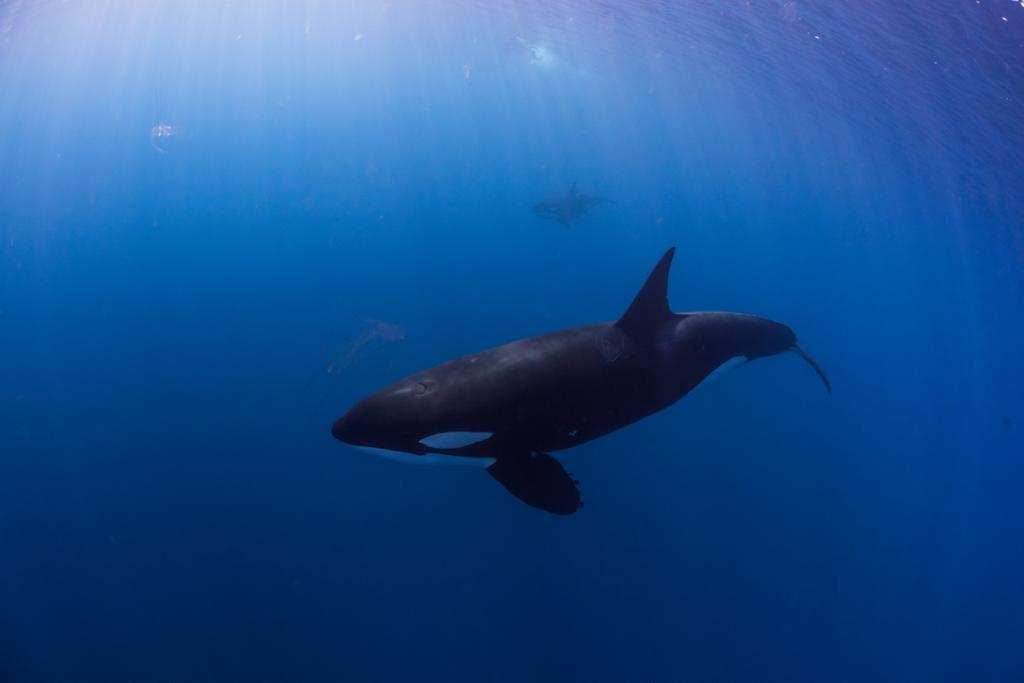

Orcas are the largest members of the dolphin family, growing up to 32 feet (9.8 m) long and 22,000 pounds (10 metric tons). Male orcas can live up to 60 years, while females live much longer, up to 90 years.
Orcas are the most widely distributed cetaceans (whales, dolphins and porpoises) and can be found in every ocean forming social groups consisting of a 3 to 20 members that tend to stay together over multiple generations. Female orcas are one of only three species that go through menopause, the other two being short-finned pilot whales and humans. Orcas have the most diverse diet of all cetaceans, eating anything from salmon to seals, whales and squid.
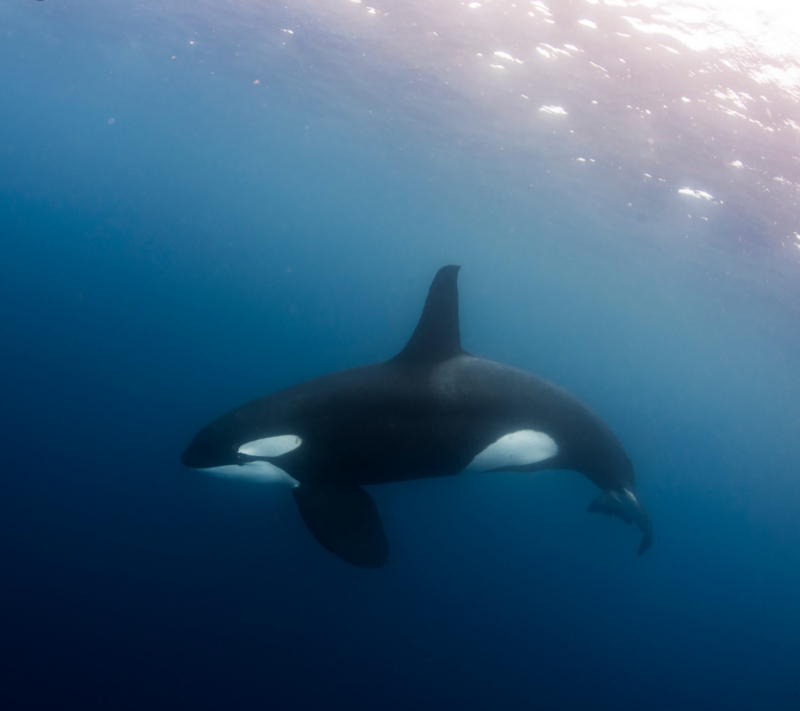
There are five ways orcas are threatened in the wild:
- In certain parts of the world, orcas are not finding enough food to eat.
- The higher up the food chain an animal is, the more contaminated it will be, with pollutants bio-accumulating in fatty tissues of the body.
- They are among the most contaminated marine mammals in the world.
- Noise Pollution from recreational boating and water sport activities, whale-watching trips, fishing vessels, and cargo ships, as well as military exercises. Really loud sounds, such as those emitted during navy sonar exercises, can actually cause physical damage to orcas and may even kill them.
- A change in temperature, water level and weather is impacting ocean habitats around the world. While it is unclear how well orcas, or their prey, will respond to extreme changes in conditions, it has been suggested that certain subpopulations of orcas will bear the brunt of these environmental changes as a result of reduced prey availability.

If you want to help alleviate some of the pressures that face orcas today, here are a few suggestions:
- Take the time to learn about different orca populations so that you can help to raise awareness about these magnificent creatures.
- Help to reduce ocean pollution by picking up litter at your nearest beach.
- Act appropriately around orcas, whether you are swimming, water-skiing or skippering a boat and make sure you go whale-watching with a reputable company.
- Respect and abide by the protective laws that regulate conduct around orcas on (or in) the water for the country you are in.
- Make a pledge – don’t buy a ticket to a facility displaying captive orcas or other dolphins.
WHY ARE ORCAS SO IMPORTANT?
Killer whales have a diverse diet, although individual populations often specialize in particular types of prey. Some local populations are considered threatened or endangered due to prey depletion, habitat loss, pollution (by PCBs), capture for marine mammal parks, and conflicts with human fisheries. When it comes to predator/prey relationships the killer whale is an apex predator and isn’t known to have any natural predators except for humans, parasites and diseases which can have a significant affect on a killer whales health. Orcas have evolved complex culture: a suite of behaviours animals learn from one another. They communicate with distinctive calls and whistles. They can live 60 years or more, and they stay in tight-knit matrilineal groups led by older females that model specific behaviours to younger animals.
CO-EXIST PURCHASES CONTRIBUTE TO PROTECTING THE WORLDS ORCA POPULATION!
Dr. Christopher Clarke

